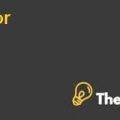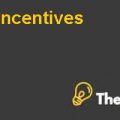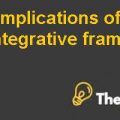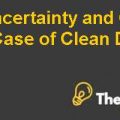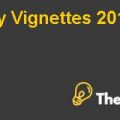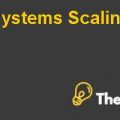IPO process and its implications.
JetBlue is under consideration to issue Initial Public Offerings (IPO) therefore it is under consideration to evaluate the IPO process and get the best from its offerings.
What is an IPO and why is it such a big deal?
IPO process is a going towards public and give the public an option to buy the shares of the company without going to the stock exchanges. In this process, the company offers the shares to the public through the investment banks, thus facilitates such arrangement between a company and the general public.
It is a big deal because the process is not as easy as it looks like. In this, the first requirement is about the reporting requirements. The private companies are under consideration that they are not required to follow the reporting standard, but for going through IPO the accounts must be reported in accordance with the acceptable accounting principles. In US its GAAPs are being followed. According to the SEC, if the company is under process or has listed its stocks on any stock exchange of America, then that company is required to present its audited accounts along with extensive corporate governance requirements to be fulfilled. These requirements are not easy to file and it has a huge cost initially; as well as yearly.
The other issue is about the offer price; to get an offer price it must undergo an extensive calculation to derive an appropriate offer price. The offer price is set according to the market and future expectations, but there is also a chance of failure. The failure occurs when the stocks are returned to the company as unsold stock by the bank, in this case, the failure situation can arise.
Is an IPO a good idea for JetBlue?
The IPO process is not good because the airline industry is going towards the growth after a decline, therefore the stock price offer in current situation may not be so attractive. The real timing to issue IPO is the peak demand that is not in the current period. The company must wait for some time and offer during the period of peak demand so that it can raise funds through other modes of financing like venture capital and debt financing.
Secondly, the IPO is generally underpriced and it is estimated that the company can get an offer price of 80% of the real value of its shares. In the current situation, it is already underpriced and its offer price is expected to be at 20% discount, therefore the IPO may not be attractive in the current situation.
Does the financial forecast in Exhibit 13 seem reasonable? Use Exhibits 8 and 11
As per the exhibit 11, the estimates seem to be reasonable because the growth is expected in the future years and past tells that the company’s revenues are expected to grow in the future years therefore these assumptions are reasonable.
What are the key assumptions?
It is assumed that the growth in sales and free cash flows are expected to be breezed after 2010. In short the future values are expected to be same as on 2010.
Is the length of the forecast period reasonable?
The length of forecast is usually considered to be of 10 years. In this case, the forecast is for 8-9 years, therefore it is reasonable.
DCF Analysis
The discounted cash flows analysis is about the company’s value through free cash flows valuation model that is considered to be one of the most appropriate model for valuation. Under this process, there are certain extensive calculations to derive the value of the business those are in detail below.
Estimate the WACC appropriate for JetBlue:
The weighted average cost of capital is the required return of its investors, it incorporates all its investors, including debt holder, equity holders and other stockholders. Under this case it is said that the company, namely Southwest Airlines that is said to be mirrored for JetBlue.JetBlue Airways (IPO process) Case Solution
To derive the cost of equity, it is appropriate to calculate it through the capital asset pricing model (CAPM) that incorporates all systematic and financial risks. In this case, the risk free rate is 5% and the market risk premium is also 5% and beta equity of the company is 1.1 as shown below exhibits, this derives a cost of equity of 10.5% (Appendix 1.1).
The cost of debt is given under the case 7.4%, but this can give a tax benefit, therefore the net of tax cost of debt is 4.9% (Appendix 1.2).
The cost of preferred stock is derived from the accounts of Southwest Airlines through the payment of interest over the value of stocks. This derives a cost of preferred stock as 8.06% (Appendix 1.3)..............................
This is just a sample partial case solution. Please place the order on the website to order your own originally done case solution.

